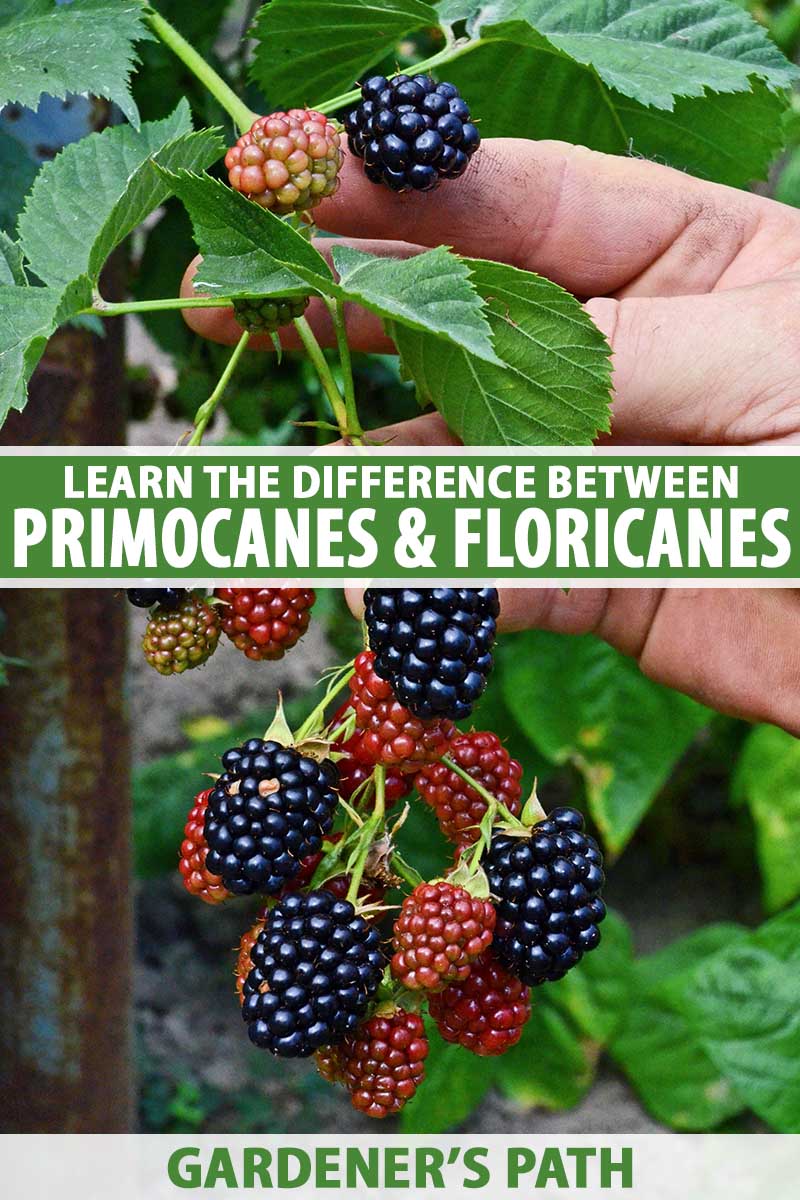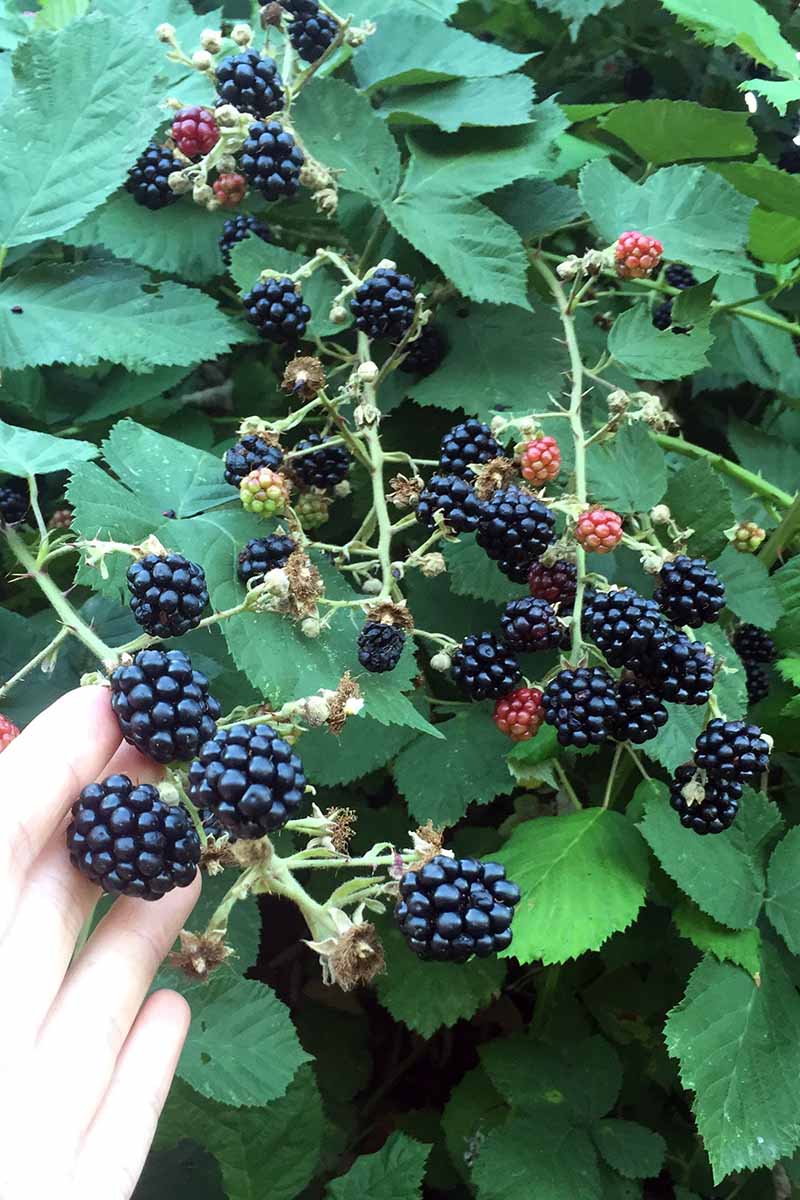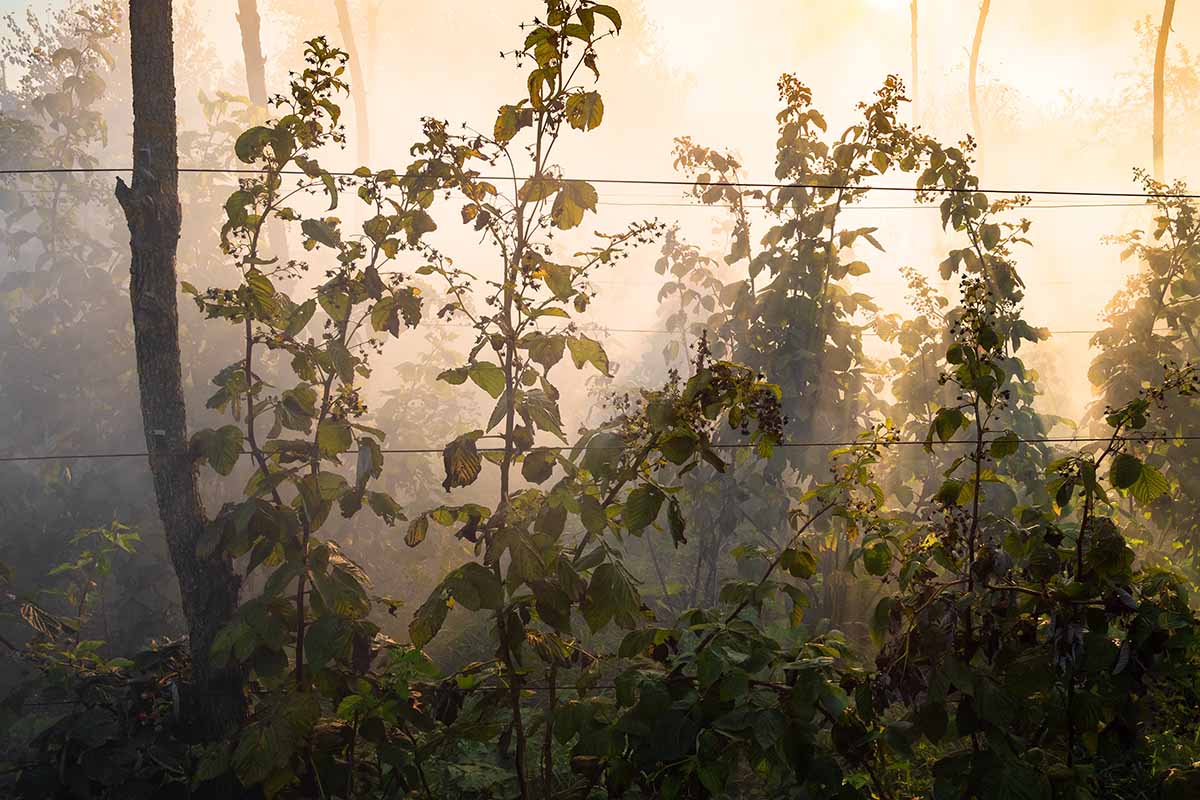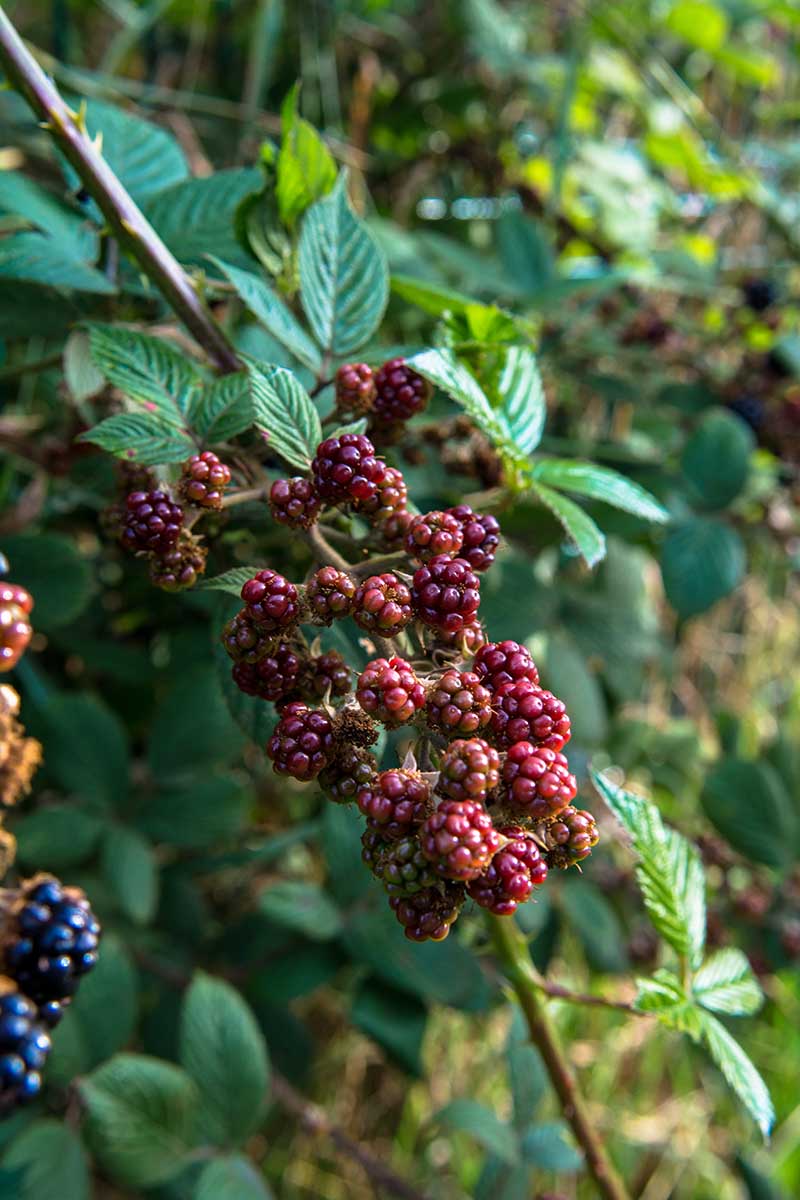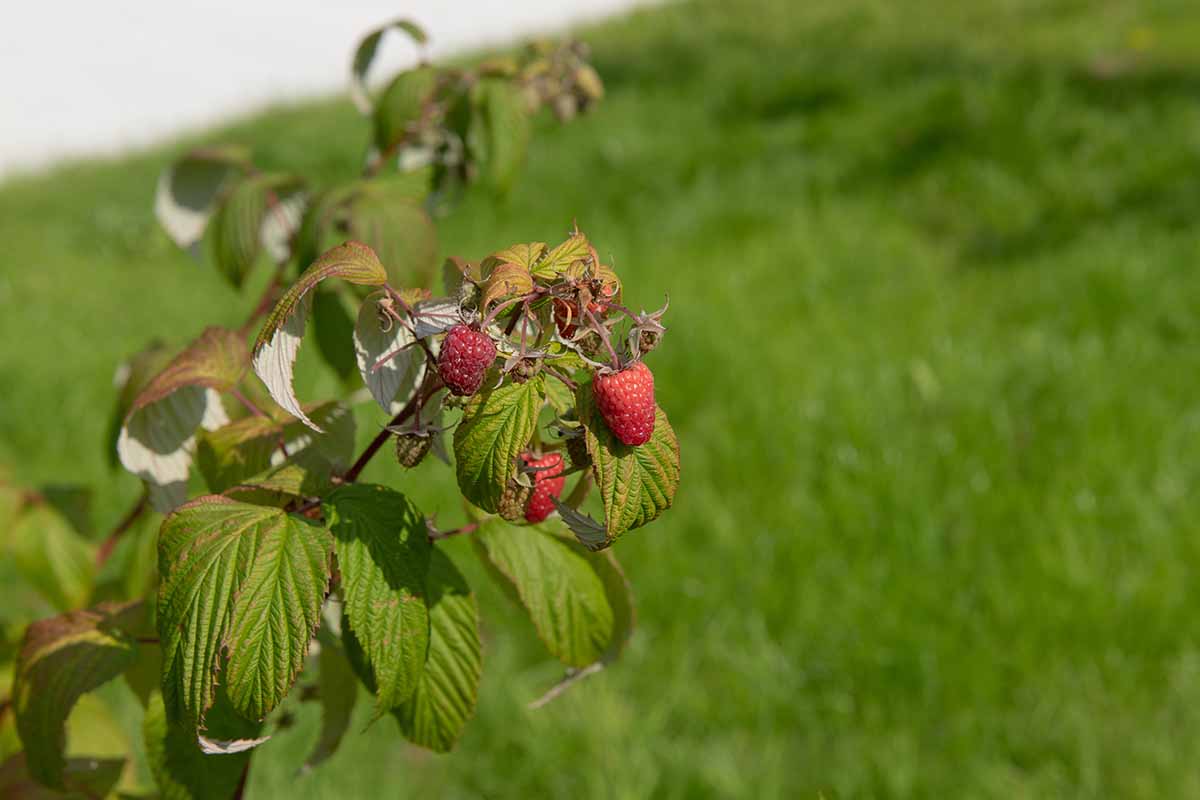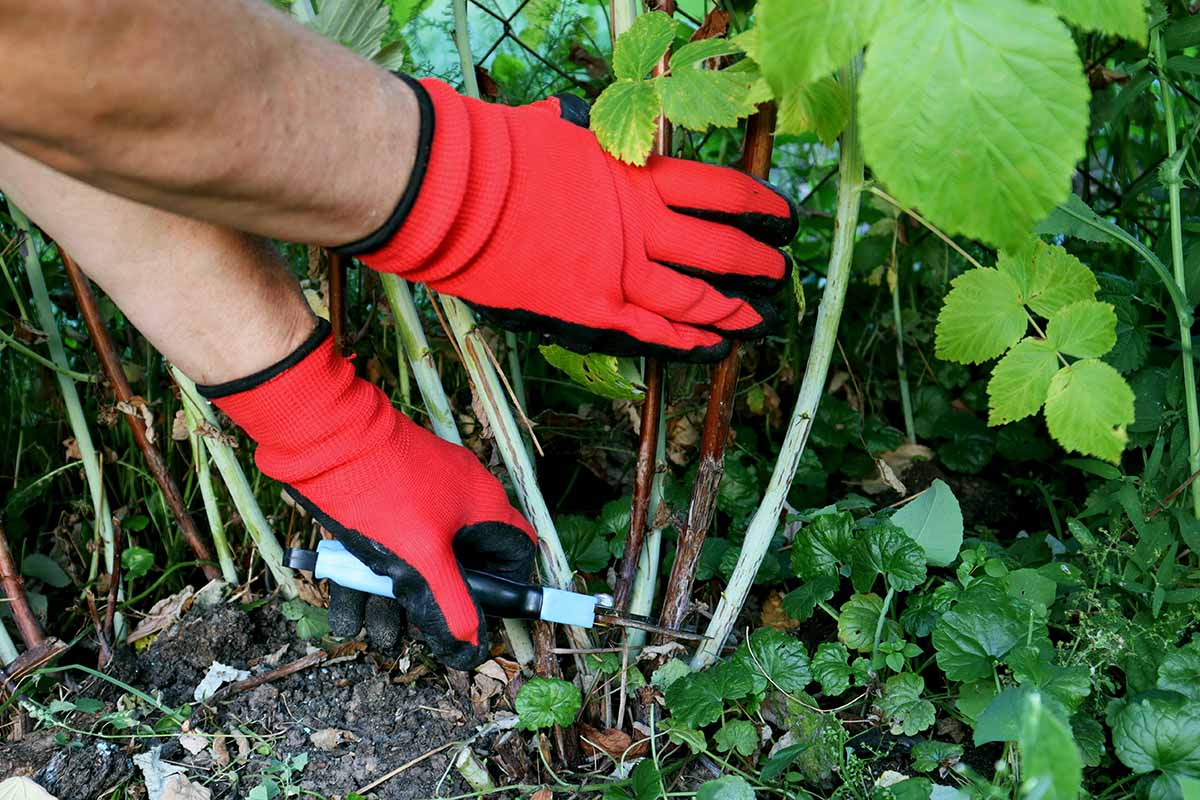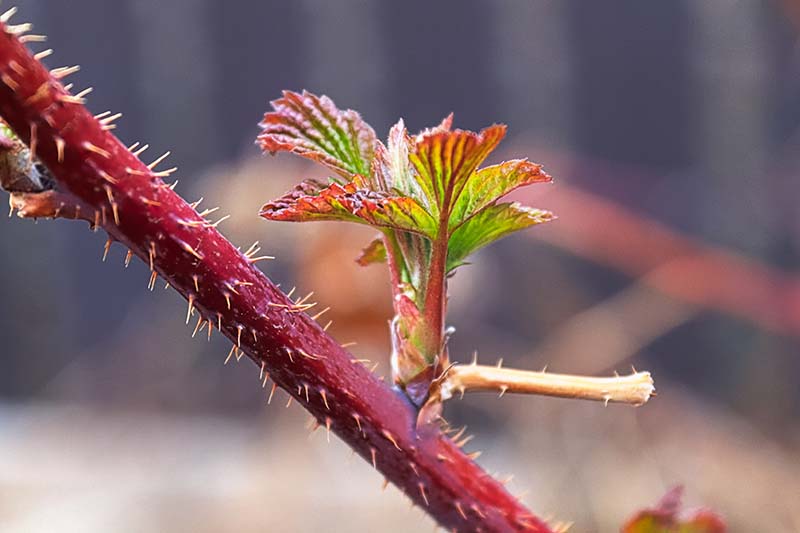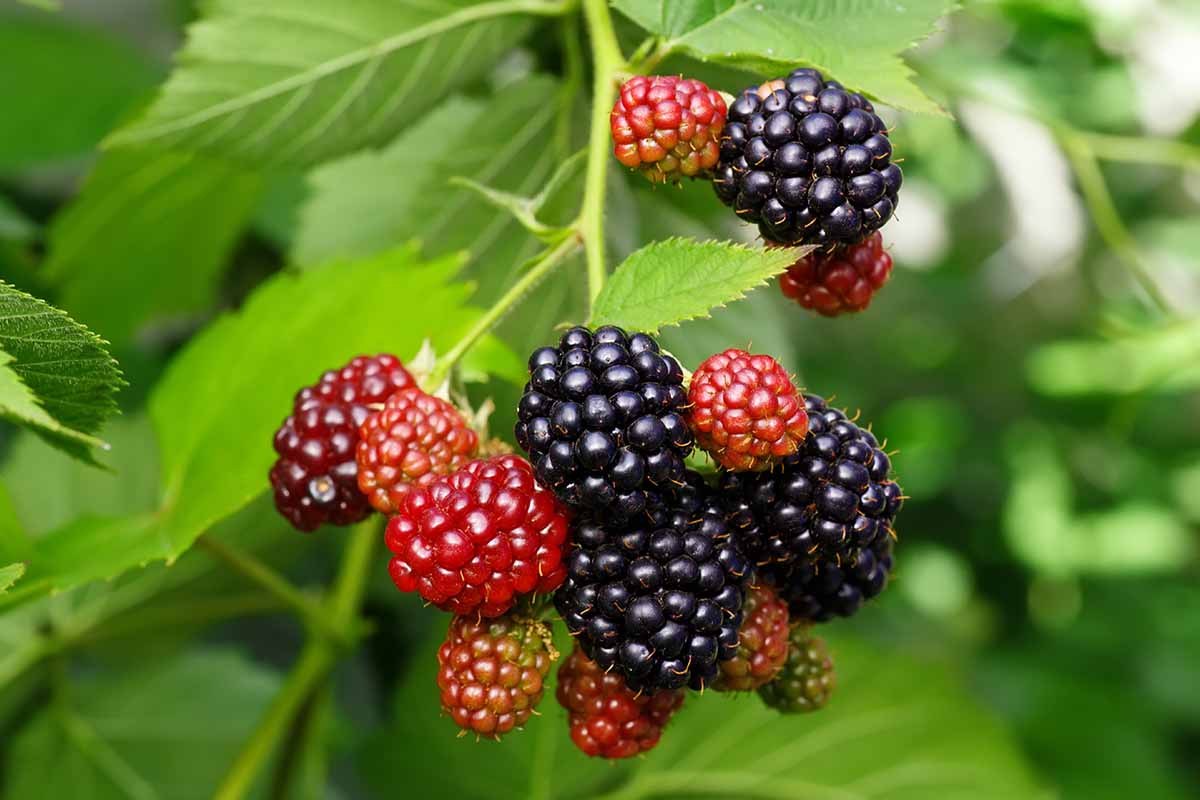Perhaps a little confused, you move on, and come across a blackberry plant. Floricane fruiting, the tag reads. We link to vendors to help you find relevant products. If you buy from one of our links, we may earn a commission. All of this can seem confusing, but it doesn’t have to be. We’ve got all the answers laid out for you below. Here’s what we’ll talk about in this article:
What Are Canes?
“Cane berries” is a term used synonymously with the word brambles, which is what many of us call plants in the Rubus genus. Bramble means thorn, but many new varieties of Rubus are thornless, so bramble is not inclusive of every type of blackberry, raspberry, boysenberry, and the like. All Rubus plants grow canes, however, and thus – “cane berry” it is. We’ll stick with that here! But what are canes, you ask? A cane is a biennial, long, woody shoot which grows out of the perennial roots from a bud, the crown, or the root of the plant itself. These shoots come in two types: primocanes and floricanes. Let’s find out what those are all about.
Primocane vs. Floricane
The name of the cane makes it easy to remember which is which. “Primocane” sounds a lot like primary, doesn’t it? These are what biennial shoots are called in their first season. These are mainly comprised of vegetative growth and will initiate flower buds in the summer and fall, usually for the next year. “Floricane” is the name for that same shoot in the second season. It has the root word for “flower” in it, so you’d think the second year would be the season it would flower and bear berries. Well, you’d be right. But clarifying terms here is not as easy as simply defining any flowering shoot as a floricane. Some primocanes do in fact produce those luscious berries you’re currently drooling about. Rather than referring to the cane itself as one or the other, I find it easier and clearer to refer to the biennial shoot as being in its primocane or floricane year, or in other words, in its first or second season. It’s too easy to confuse the terms and imagine these as two independent varieties of shoots. Rather, it’s one shoot with a different name, depending on how old it is. Plus, a plant can have both at one time. They often do. Whether flowers and fruits are present on the cane during the primocane year and/or the floricane year depends on the fruiting type. We’ll get into the differences between the two types of plants below. For now, how can you tell the difference between the two shoot types? Primocanes are fresh shoots arising from the bud, crown, or root. They are thick stemmed and succulent, with long internodes. The leaves on these have five leaflets, and early in the season, these leaves are bright green and soft. Floricanes have shorter internodes, three leaflets, and the leaves are smaller and darker in color than primocane leaves. They also die back to the crown of the plant following fruiting. Got it? Let’s move on and look into how that process works, depending on the plant.
Primocane-Fruiting Plants
Primocanes, and primocane fruiting, are two different terms. We talked about the former above. The latter are plants which will grow fruit at the tip of their primary year canes. They produce berries in the fall, from August to October, depending on the variety. If you check the tag of a raspberry plant at the nursery and it says “everbearing” or “fall bearing,” it is a primocane bearer or fruiter. If a primocane on these plants overwinters successfully or it isn’t pruned out, it will flower again in the early summer of the second season – when it is technically a floricane). Thus, just because it is named as such does not mean it only flowers and produces berries on the first year’s canes. Rather, primocane-fruiting plants will flower on both, if given the chance. However, both the quantity and the quality of the floricanes’ fruit will suffer on primocane-bearing types. Most growers of primocane-fruiting types will prune all of the canes down close to the ground while the bush is dormant, usually in early spring. The next season, the primary shoots will grow and reproduce again. Why choose these over floricane-bearing plants? They can produce fruit in their first year, and pruning is simpler overall, thanks to being able to cut all of the canes down without having to think about which type is which. Plus, the shoots of this type don’t need to be able to withstand harsh winters to produce a harvest.
Floricane-Fruiting Plants
Floricane-fruiting plants are summer bearing, producing fruit in June and July from buds initiated the previous year. Therefore, the canes must overwinter. Pruning these plants after harvest is a little more complicated, since you must work around the first-year shoots to prune out the old shoots. A certain number of the best vegetative shoots on each plant – five to eight for blackberries and eight to 12 for raspberries – are kept in place and tied up in one of several available trellising methods to overwinter and fruit the following year. Salmonberry (R. spectabilis) and thimbleberry (R. parviflorus), common wild berries that are also sometimes grown in cultivation, are both floricane fruiters. The advantage of growing this type is the availability of fruit that is ready earlier in the season, avoiding the majority of potential spotted winged drosophila (SWD) damage. Plus, if you want earlier fruit, the berries on these are much better in quality than those grown the second year for primocane-bearing varieties. To recap: Everbearing or fall-bearing cane berries are primocane fruiters, and they produce fruit later in the season. All canes can be pruned to the ground while dormant for a fresh batch of shoots the next season. Summer-bearing types are floricane fruiters, and these produce fruit in their second summer. Canes need to overwinter successfully to yield a crop, and they often ripen before SWD is at its peak. What cane berry species do you grow at home? Which type would you choose to add to your garden – summer- or fall-bearing? Tell me about it and share your reasons why in the comments below! While you’re here, read these guides next to learn more about cane berry care:
How to Grow Raspberries: Enjoy Berries for Years to ComeHow to Grow and Care for Blackberry BushesHow to Grow and Care for Boysenberry Bushes
